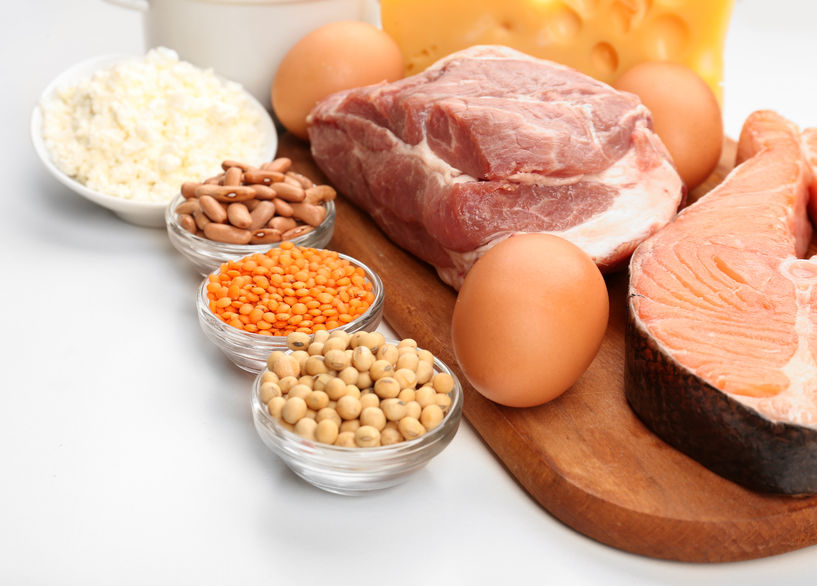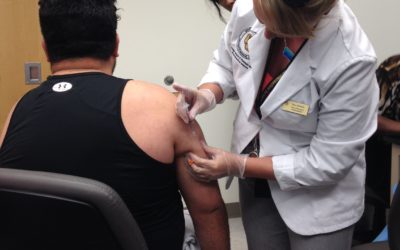Food Pyramid/My Plate: Protein
Last week we took a deeper look at grains and how they play a part in a healthy diet. This week I want to talk about a very important part of a healthy diet—protein. We can get protein in our diets from both animal and plant sources. Which is the best? How much protein do we need? What types of meat should we eat? Is a vegetarian diet ideal?
The average adult female needs about 46 grams of protein a day, and the average adult male needs around 56 grams. This is why men tend to prefer to eat more meat. I know this is true of all the men in my family!
Animal Sources of Protein
While animal protein can be delicious and a great source of nutrients in our diets, I feel very strongly about making sure the meat is from a source where the animals were raised humanely. Conventional meat plants can be absolutely horrific. (1) A great way to ensure this is to buy locally. I love being able to shake the hand of the cattle rancher we buy our beef from, knowing he treats his animals with the care and respect they deserve.
1. Beef can be a great source of protein, but most beef in this country is very poor quality. Conventional cattle are stuck in a stall and fed genetically modified corn rather than their natural diet, which is grass from a pasture. Conventional cattle are also often given growth hormones (rBGH) to make them fatter, and antibiotics because of the poor living conditions. Choose organic, grass fed beef whenever possible. It is much leaner, has more Omega 3’s, has half the amount of saturated fat, and contains more vitamin E, vitamin C and beta-carotene than corn fed beef. Choosing organic will ensure that the meat is growth hormone and antibiotic free.
2. Poultry, such as chicken, turkey, duck, Cornish hens, etc. is another great source of protein. Most conventional chickens are kept in small, dark cages and given antibiotics. 80% of all antibiotics in the US are given to livestock. This is concerning because the antibiotics kill off the weak bacteria and the strongest survive. Over time this process creates “super bacteria” that can be present in the meat. This is why it is important to buy chicken that is pasture raised and antibiotic free. Look for “certified humane” on the label and choose organic when possible.
3. Fish can also be a great choice for protein, but again the source is important. Farm raised fish are not fed their natural diet and can contain heavy metals such as mercury. They are also fed antibiotics because disease runs rampant. Farmed salmon is an unappetizing grey color, so pink dye is added to make it look more appealing. Wild-caught salmon is naturally pink and much better for you!
Note: If you take a fish oil supplement, MAKE SURE it is pharmaceutical grade (it will say this on the bottle.) This ensures that any heavy metals have been purified out.
4. Pork is probably my least favorite protein choice for a few reasons. Pigs are scavengers, meaning they eat anything from dead carcasses to feces. And you eat what your food eats! Pigs also do not have the multi-chambered stomachs that cows, deer, buffalo, and other animals have. This means that what the pig eats is not filtered nearly as well and can contain parasites and viruses. Pigs also store their toxins in their fatty tissues. Sorry bacon lovers, it’s the truth!
5. Eggs are a great source of protein, and despite their bad rap for containing cholesterol, more studies are showing that they do not raise your cholesterol. (2) So eat your eggs, yolk and all! I always choose eggs from chickens that were pasture raised. Actually I buy them from a neighbor who has chickens!
6. Dairy such as Greek yogurt or cottage cheese is also a source of protein. I will go into detail regarding this food group in my next blog!
Plant Sources of Protein
Some people choose a vegetarian or a vegan diet for nutritional and/or ethical reasons. Even if you are not a vegetarian, try to include more plant sources of protein into your diet. Find some new vegetarian dishes to try and consider having one or two meatless dinners a week.
When it comes to plant sources of protein, one important factor is determining if that source is a “complete protein.” This means that the plant contains all 8 of the essential amino acids. There are 20 amino acids, but 8 of them our bodies cannot make and therefore we must get them from our food. While incomplete proteins can still be part of your diet, vegetarians need to be mindful of making sure they get all of the essential amino acids.
1. Beans… have you ever wondered why they are often served with rice? Beans by themselves are an incomplete protein, but when paired with a grain, all 8 essential amino acids are present! A fun fact for the next time you serve Mexican food for dinner!
2. Nuts and seeds such as almonds, walnuts, cashews, pistachios, chia seeds, sunflower seeds, hemp seeds, and pumpkin seeds are full of nutrients, including protein. Add them to a salad, smoothie, trail mix, or just eat them plain! It’s best to eat them raw as roasting destroys the delicate oils and many of the nutrients. My favorite way to get these into my diet is with a nut and seed butter such as Nuttzo! (3) I spread it on toast or eat with an apple.
3. Quinoa (pronounced KEEN-wah) is often thought of as a grain but is actually a seed that resembles brown rice or couscous. It contains many nutrients and is a complete protein.
4. Soy is another topic I will have to tackle another time. Let’s just say that even though it is a source of protein, it is not a part of my diet for a few reasons!
5. Other plant sources of protein include sprouts, spirulina, amaranth, buckwheat, whole grains, lentils, avocado, broccoli, peas, sweet potato, nutritional yeast, oats, and dark leafy green vegetables. (4)
Protein Powders
A word of caution when it comes to protein supplements such as the protein powder you have probably seen at the gym or at GNC. MOST of these supplements contain a long list of chemical additives such as artificial sweeteners, hydrogenated oils, artificial colors and flavorings, msg, and more. (5) ALWAYS read the labels and make sure you know what each ingredient is. My favorite protein powder is from Garden of Life. It is 100% plant based, raw, free from fillers and additives, organic, and tastes great! (6)
Resources:
1. http://www.takepart.com/foodinc
2. http://www.jillianmichaels.com/fit/lose-weight/myth-eggs
3. http://www.nuttzo.com
4. http://articles.mercola.com/sites/articles/archive/2010/06/22/some-protein-drinks-could-poison-you.aspx
5. https://www.gardenoflife.com/content/product/why-choose-raw-protein/












